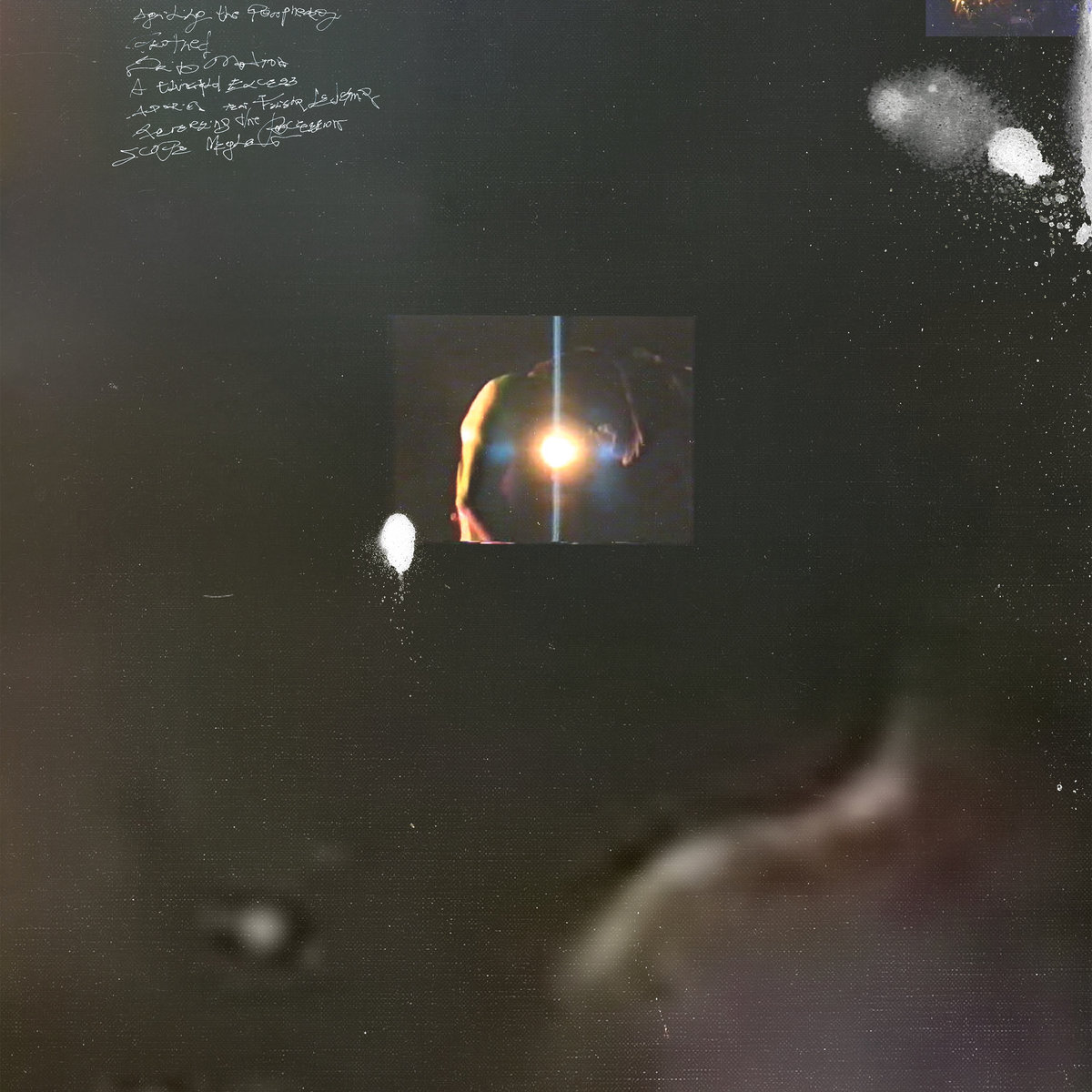 I was a bit later to the Angelo Harmsworth party than I would have liked, but the Berlin-based American composer has been fitfully releasing very distinctive blown-out "ambient" albums for about a decade now on an array of hip and discriminating small labels (Opal Tapes, Vaagner, enmossed, Psychic Liberation, etc.). Harmsworth's latest is his first for Students of Decay and marks a rare vinyl outing, as most of his previous physical releases have been limited to cassette. According to the label, Singe "may be the high water mark" of Harmsworth's career to date, which does feel like a completely plausible claim, but one that is very hard to confidently echo given how many killer Harmsworth pieces already exist. Even if Singe fails to conclusively eclipse all of Harmsworth's past triumphs, however, it does seem to be one of his most consistently strong releases and an ideal starting point for the curious. Notably, describing Harmsworth's vision as "ambient" or even "power ambient" feels cruelly reductionist, which is probably why he amusingly titled a 2020 release Fully Automated Luxury Ambient. That imaginary subgenre feels much closer to the mark, as the intensity and textural inventiveness that Angelo brings to these compositions shares far more common ground with artists like Tim Hecker or Fennesz (or collapsing power lines during a live volcano) than it does with anyone trafficking in droning, meditative loops.
I was a bit later to the Angelo Harmsworth party than I would have liked, but the Berlin-based American composer has been fitfully releasing very distinctive blown-out "ambient" albums for about a decade now on an array of hip and discriminating small labels (Opal Tapes, Vaagner, enmossed, Psychic Liberation, etc.). Harmsworth's latest is his first for Students of Decay and marks a rare vinyl outing, as most of his previous physical releases have been limited to cassette. According to the label, Singe "may be the high water mark" of Harmsworth's career to date, which does feel like a completely plausible claim, but one that is very hard to confidently echo given how many killer Harmsworth pieces already exist. Even if Singe fails to conclusively eclipse all of Harmsworth's past triumphs, however, it does seem to be one of his most consistently strong releases and an ideal starting point for the curious. Notably, describing Harmsworth's vision as "ambient" or even "power ambient" feels cruelly reductionist, which is probably why he amusingly titled a 2020 release Fully Automated Luxury Ambient. That imaginary subgenre feels much closer to the mark, as the intensity and textural inventiveness that Angelo brings to these compositions shares far more common ground with artists like Tim Hecker or Fennesz (or collapsing power lines during a live volcano) than it does with anyone trafficking in droning, meditative loops.
Students of Decay
Those craving the aforementioned "collapsing power lines" vibe will have a mercifully short wait, as the opening "Igniting the Periphery" calls to mind buzzing high tension wires swayed by a deep seismic shudder as the surrounding buildings collapse in slow motion. There are some other elements as well, like fragments of twinkling piano and warm waves of frayed drones, but the viscerally heaving, buzzing, and gnarled wreckage at the heart of the piece is the showstopper—everything else is just there to color the mood. That balance holds true for the rest of the album as well, as the Singe experience feels akin to wandering through six cataclysmic yet weirdly beautiful natural disasters. For example, the crackling and hissing "Frothed" evokes slow jets of magma breaking through a buckling, blasted landscape, while "Drip Motion" has the feel of a storm slowly forming and then slowly dissipating. In short, Harmsworth harnesses the proverbial "force of nature" and wields it beautifully. That said, "Drip Motion" is an album highlight for more conventionally musical reasons as well, as it resembles the burning and heaving wreckage of a killer Porter Ricks cut fading in and out of focus. "A Twofold Excess" then ends the album's first half with yet another gem, as it feels like slowed-down footage of a tornado ripping apart a sawmill before dissolving into a sublime coda of sputtering static, tender piano, and warbling, whimpering streaks of psychedelia.
 Mike Griffin's Parashi project has never been an easy one to pin down as far as expectations go. While never predictable, the material was usually abstract and not musical in the conventional sense, existing somewhere on a continuum between harsh noise and less abrasive, almost early Cabaret Voltaire like treatments of tapes and effects. For Vinegar Baths, he certainly retains these elements, but the emphasis is on guitar, bass, and surprisingly, vocals.
Mike Griffin's Parashi project has never been an easy one to pin down as far as expectations go. While never predictable, the material was usually abstract and not musical in the conventional sense, existing somewhere on a continuum between harsh noise and less abrasive, almost early Cabaret Voltaire like treatments of tapes and effects. For Vinegar Baths, he certainly retains these elements, but the emphasis is on guitar, bass, and surprisingly, vocals.

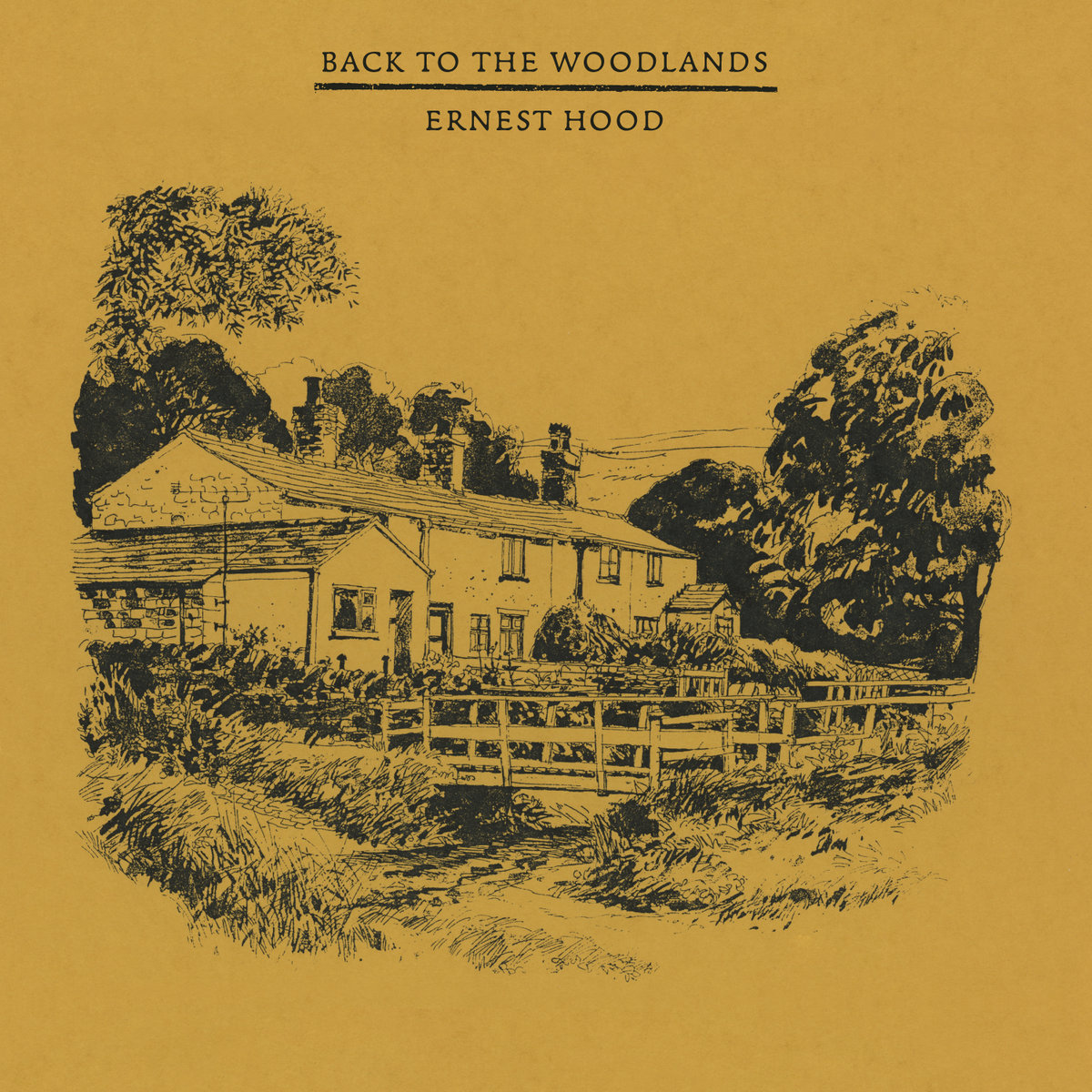 Ernest Hood is best known for the 1975 release Neighborhoods, a unique album of locations recorded during his travels through Oregon combined later with his zither and synthesizer music. It is far more common now but Hood was a pioneer in the use of "found sound." Back To The Woodlands harks from the same (1972-1982) period but has never been released until now. It is a fine addition to Hood's legacy of work which is reflective, warm, and inviting, without being easy, silly, or overly sentimental.
Ernest Hood is best known for the 1975 release Neighborhoods, a unique album of locations recorded during his travels through Oregon combined later with his zither and synthesizer music. It is far more common now but Hood was a pioneer in the use of "found sound." Back To The Woodlands harks from the same (1972-1982) period but has never been released until now. It is a fine addition to Hood's legacy of work which is reflective, warm, and inviting, without being easy, silly, or overly sentimental.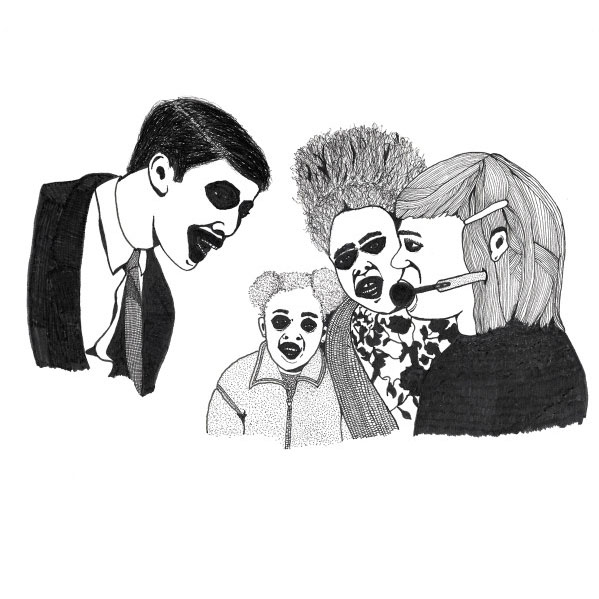 With a debut in 2007, the enigmatic Darksmith has a relatively dense body of work centered around manipulated tapes and electronic excursions. Imposter is one in a series of releases sharing these qualities, as well as consistently strange artistic consistency visually. Unexpecting changes from meditative to chaotic are the norm in this chaotic, yet beautiful disc.
With a debut in 2007, the enigmatic Darksmith has a relatively dense body of work centered around manipulated tapes and electronic excursions. Imposter is one in a series of releases sharing these qualities, as well as consistently strange artistic consistency visually. Unexpecting changes from meditative to chaotic are the norm in this chaotic, yet beautiful disc. This latest release from this eternally innovative Stockholm-based composer is a durational tour de force that first began to take shape in empty Berlin concert halls in the early months of the pandemic. While I note with grim humor that the pandemic has itself become an endlessly shifting durational tour de force, Malone’s primary inspiration came instead from the ambient sense of unreality and distorted time that became pervasive as the fabric of normal daily life quickly unraveled. Like many other artists, Malone suddenly found herself with plenty of free time during that period of dread, isolation, and uncertainty, yet she was fortunate enough to get an invitation to record new music at Berlin’s Funkhaus and MONOM and even luckier still to have some extremely talented friends around with newly open schedules themselves. In short, the stars were in perfect alignment for one hell of an avant-drone dream team to form, as Malone (armed with 72 sine wave oscillators) tapped in like-minded souls Stephen O’Malley and Lucy Railton and the expected slow-burning dark sorcery ensued. Does Spring Hide Its Joy feels like an inspired twist on the longform drone majesty of artists like Éliane Radigue, as Malone employed just intonation to layer complex and otherworldly harmonies while her collaborators gamely helped ensure that the crescendos were visceral, gnarled and snarling enough to leave a deep impression.
This latest release from this eternally innovative Stockholm-based composer is a durational tour de force that first began to take shape in empty Berlin concert halls in the early months of the pandemic. While I note with grim humor that the pandemic has itself become an endlessly shifting durational tour de force, Malone’s primary inspiration came instead from the ambient sense of unreality and distorted time that became pervasive as the fabric of normal daily life quickly unraveled. Like many other artists, Malone suddenly found herself with plenty of free time during that period of dread, isolation, and uncertainty, yet she was fortunate enough to get an invitation to record new music at Berlin’s Funkhaus and MONOM and even luckier still to have some extremely talented friends around with newly open schedules themselves. In short, the stars were in perfect alignment for one hell of an avant-drone dream team to form, as Malone (armed with 72 sine wave oscillators) tapped in like-minded souls Stephen O’Malley and Lucy Railton and the expected slow-burning dark sorcery ensued. Does Spring Hide Its Joy feels like an inspired twist on the longform drone majesty of artists like Éliane Radigue, as Malone employed just intonation to layer complex and otherworldly harmonies while her collaborators gamely helped ensure that the crescendos were visceral, gnarled and snarling enough to leave a deep impression. This mammoth and category-defying opus is easily the most wildly ambitious debut in recent memory (if not ever) and also happens to be one of my absolute favorite albums of 2022. It was one hell of an enigma at first as well, as Stroom quietly released the album back in October with absolutely no background information provided at all. Given the absolutely bananas volume of material (4 ½ hours) and the consistently high level of quality, I expected that it would be revealed to be some sort of decade-spanning art project involving an all-star cast of sound art luminaries, but I turned out to be spectacularly wrong about most of that. As it turns out, Voice Actor is instead a recent collaboration between Noa Kurzweil (Supertalented) and Levi Lanser (Ludittes), neither of whom I had previously encountered. However, I was at least partially right about the “art project” bit, as Sent From My Telephone collects three years of pieces that the duo originally intended as a radio play (and there are plenty of guest collaborators involved as well). The heart of the project, however, is Kurzweil’s seductive voice and her enigmatic diaristic monologues, which makes Félicia Atkinson a close kindred spirit, yet Lanser’s varied and phantasmagoric backdrops elevate the project into a mesmerizing durational mindfuck that effortlessly blurs the lines between spoken word, plunderphonics, ambient drone, outsider R&B, psychedelia, and Hype Williams’ hypnagogic sound collage side.
This mammoth and category-defying opus is easily the most wildly ambitious debut in recent memory (if not ever) and also happens to be one of my absolute favorite albums of 2022. It was one hell of an enigma at first as well, as Stroom quietly released the album back in October with absolutely no background information provided at all. Given the absolutely bananas volume of material (4 ½ hours) and the consistently high level of quality, I expected that it would be revealed to be some sort of decade-spanning art project involving an all-star cast of sound art luminaries, but I turned out to be spectacularly wrong about most of that. As it turns out, Voice Actor is instead a recent collaboration between Noa Kurzweil (Supertalented) and Levi Lanser (Ludittes), neither of whom I had previously encountered. However, I was at least partially right about the “art project” bit, as Sent From My Telephone collects three years of pieces that the duo originally intended as a radio play (and there are plenty of guest collaborators involved as well). The heart of the project, however, is Kurzweil’s seductive voice and her enigmatic diaristic monologues, which makes Félicia Atkinson a close kindred spirit, yet Lanser’s varied and phantasmagoric backdrops elevate the project into a mesmerizing durational mindfuck that effortlessly blurs the lines between spoken word, plunderphonics, ambient drone, outsider R&B, psychedelia, and Hype Williams’ hypnagogic sound collage side.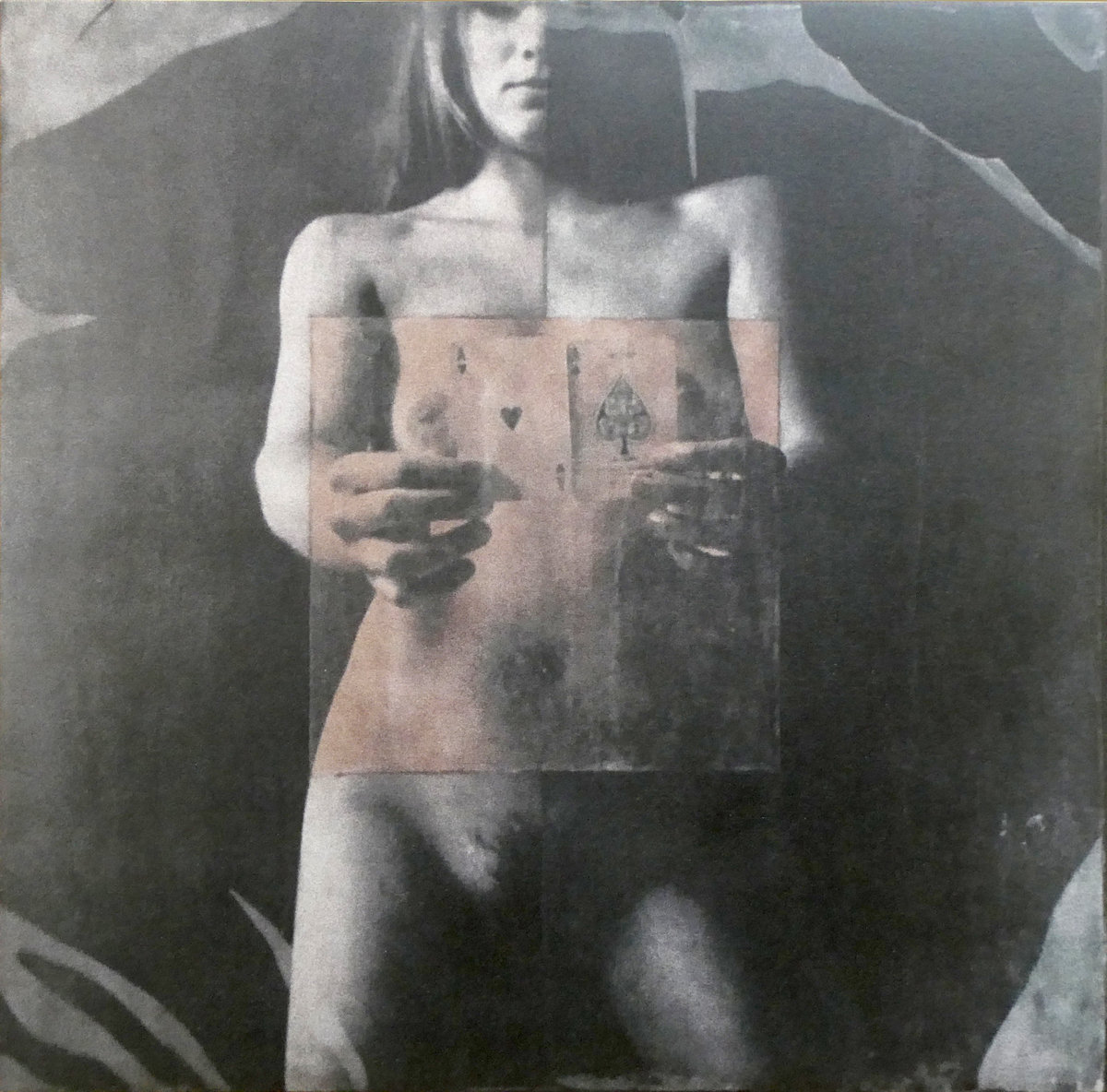 The French Standard In-Fi label has been one of my casual obsessions over the last few years and this second album from Omertà was my favorite release that surfaced from that milieu in 2022. From what I can tell as an outsider, there appears to be a loosely knit family of artists, psych enthusiasts, and avant-folk weirdos that convene periodically in varying configurations and occasionally an album will eventually surface documenting whatever magic transpired. Omertà unsurprisingly shares key members with other fitfully killer projects like France and Tanz Mein Herz, but this ensemble is an unique animal for a number of reasons. The most striking of those reasons are the breathy, sensuous vocals of Florence Giroud, who I believe is only active in this one project (as far as rock bands are concerned, at least). Giroud’s vocals aside, Omertà is also far more informed by eroticism, dream states, pop music, and chansons than the usual Standard In-Fi fare. To my ears, something compelling almost always seems to happen whenever Jeremie Sauvage &
The French Standard In-Fi label has been one of my casual obsessions over the last few years and this second album from Omertà was my favorite release that surfaced from that milieu in 2022. From what I can tell as an outsider, there appears to be a loosely knit family of artists, psych enthusiasts, and avant-folk weirdos that convene periodically in varying configurations and occasionally an album will eventually surface documenting whatever magic transpired. Omertà unsurprisingly shares key members with other fitfully killer projects like France and Tanz Mein Herz, but this ensemble is an unique animal for a number of reasons. The most striking of those reasons are the breathy, sensuous vocals of Florence Giroud, who I believe is only active in this one project (as far as rock bands are concerned, at least). Giroud’s vocals aside, Omertà is also far more informed by eroticism, dream states, pop music, and chansons than the usual Standard In-Fi fare. To my ears, something compelling almost always seems to happen whenever Jeremie Sauvage &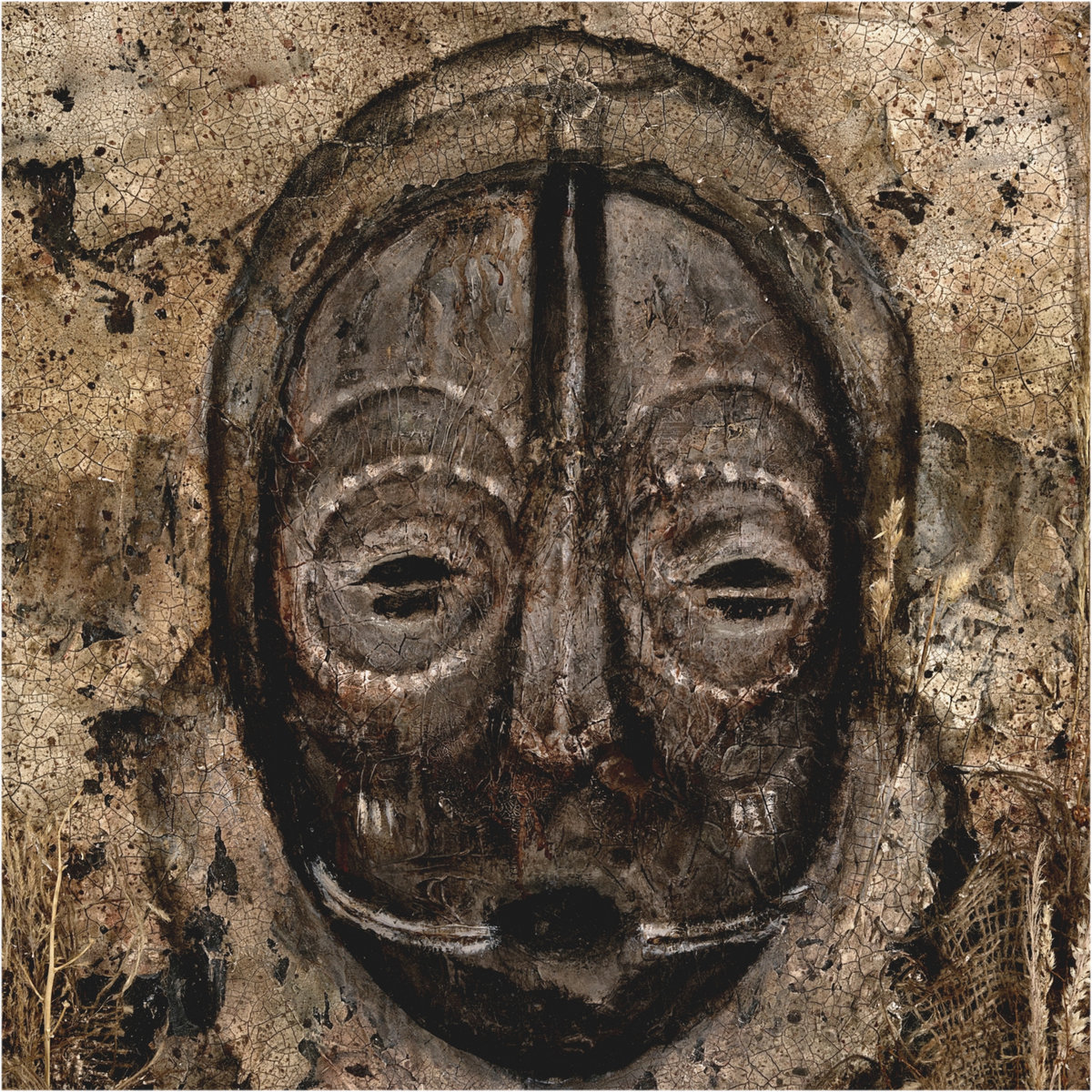 The latest from this shapeshifting and anonymous southwestern psych duo marks both their return to Akuphone and the first proper follow up to 2020's landmark The Totemist. To some degree, Ak'Chamel revisit roughly the same distinctive stylistic terrain as their last LP, approximating some kind of otherworldly and psychotropic collision of Sun City Girls and Sublime Frequencies. That said, Ak'Chamel do sound a hell of a lot more like a mariachi band soundtracking a jungle puppet nightmare this time around and that festively macabre vibe suits them quite nicely. The band might see things a little differently themselves, as this album is billed as "a perfect soundtrack for the desertification of our world," but experiencing this lysergic Cannibal Holocaust-esque mindfuck is probably just the thing for helping someone appreciate the wide-open spaces and solitude of desert life. In keeping with that desert theme, there are plenty of prominent Middle Eastern melodies and instruments on the album, but Ak'Chamel is singularly adept at dissolving regional boundaries (and possibly dimensional ones as well) in their quest for deep, exotic, and oft-uncategorizable psychedelia.
The latest from this shapeshifting and anonymous southwestern psych duo marks both their return to Akuphone and the first proper follow up to 2020's landmark The Totemist. To some degree, Ak'Chamel revisit roughly the same distinctive stylistic terrain as their last LP, approximating some kind of otherworldly and psychotropic collision of Sun City Girls and Sublime Frequencies. That said, Ak'Chamel do sound a hell of a lot more like a mariachi band soundtracking a jungle puppet nightmare this time around and that festively macabre vibe suits them quite nicely. The band might see things a little differently themselves, as this album is billed as "a perfect soundtrack for the desertification of our world," but experiencing this lysergic Cannibal Holocaust-esque mindfuck is probably just the thing for helping someone appreciate the wide-open spaces and solitude of desert life. In keeping with that desert theme, there are plenty of prominent Middle Eastern melodies and instruments on the album, but Ak'Chamel is singularly adept at dissolving regional boundaries (and possibly dimensional ones as well) in their quest for deep, exotic, and oft-uncategorizable psychedelia. This latest album from Carla dal Forno is her first since relocating to a small town (Castlemaine) in her native Australia and that dramatic change in environment has understandably made quite an impact on her overall vibe (as the album description puts it, she "returns self-assured and firmly settled within the dense eucalypt bushlands"). Fortunately, it seems like the transformation was an entirely favorable one, as literally everything that made dal Forno's previous work so wonderful and distinctive (ghostly pop hooks, stark bass-driven post-punk grooves, tight songcraft) remains intact. Now, however, her bloodless pop songs are charmingly enhanced with an understated tropical feel as well. For the most part, Come Around is still light years away from anything like a conventional beach party, but songs like the title piece at least come close to approximating a hypnagogic one. Aside from that, dal Forno also displays some impressive creative evolution on the production side, as these nine songs are a feast of subtle dubwise and psych-inspired touches in the periphery. That said, the primary appeal of Come Around is still the same as ever, as dal Forno remains nearly unerring in churning out songs so strong that they truly do not need anything more than her voice, a cool bass line, and a simple drum machine groove to leave a deep impression.
This latest album from Carla dal Forno is her first since relocating to a small town (Castlemaine) in her native Australia and that dramatic change in environment has understandably made quite an impact on her overall vibe (as the album description puts it, she "returns self-assured and firmly settled within the dense eucalypt bushlands"). Fortunately, it seems like the transformation was an entirely favorable one, as literally everything that made dal Forno's previous work so wonderful and distinctive (ghostly pop hooks, stark bass-driven post-punk grooves, tight songcraft) remains intact. Now, however, her bloodless pop songs are charmingly enhanced with an understated tropical feel as well. For the most part, Come Around is still light years away from anything like a conventional beach party, but songs like the title piece at least come close to approximating a hypnagogic one. Aside from that, dal Forno also displays some impressive creative evolution on the production side, as these nine songs are a feast of subtle dubwise and psych-inspired touches in the periphery. That said, the primary appeal of Come Around is still the same as ever, as dal Forno remains nearly unerring in churning out songs so strong that they truly do not need anything more than her voice, a cool bass line, and a simple drum machine groove to leave a deep impression.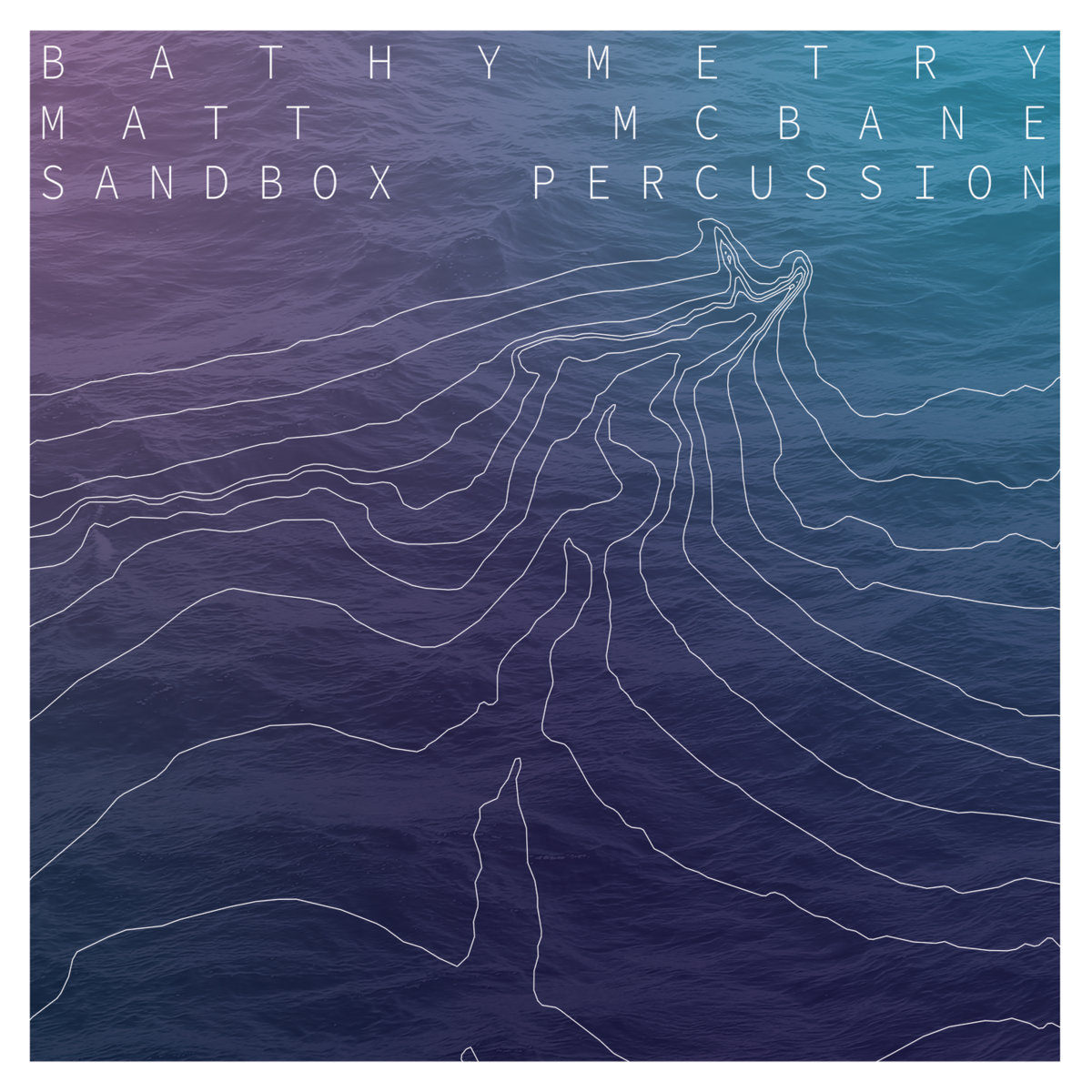 As a teenage surfer Matt McBane became obsessed with the sea and the way in which the bathymetry of the ocean floor affects the way that waves break. His composition Bathymetry mirrors that relationship, with his bass synthesizer providing the platform to shape the more trebly waves of varied percussion played by Sandbox Percussion (a well-named and playful ensemble). On the surface, this album is slightly out of my, rather idiosyncratic, comfort zone. The accompanying videos were off-putting and (politeness dictates that I cannot write what I would cheerfully do with them) ping-pong balls overused. Despite this, my listening curiosity was piqued and held steady. Then halfway through the 40 minute duration, the track "Groundswell" completely won me over, and I rode a wave of enjoyment all the way to the end. Later on, afer repeated listens, it occurred to me that the same process happens on each track, as bursts of percussive grit, pops and scrapes away, to eventually leave the rewarding pearl.
As a teenage surfer Matt McBane became obsessed with the sea and the way in which the bathymetry of the ocean floor affects the way that waves break. His composition Bathymetry mirrors that relationship, with his bass synthesizer providing the platform to shape the more trebly waves of varied percussion played by Sandbox Percussion (a well-named and playful ensemble). On the surface, this album is slightly out of my, rather idiosyncratic, comfort zone. The accompanying videos were off-putting and (politeness dictates that I cannot write what I would cheerfully do with them) ping-pong balls overused. Despite this, my listening curiosity was piqued and held steady. Then halfway through the 40 minute duration, the track "Groundswell" completely won me over, and I rode a wave of enjoyment all the way to the end. Later on, afer repeated listens, it occurred to me that the same process happens on each track, as bursts of percussive grit, pops and scrapes away, to eventually leave the rewarding pearl.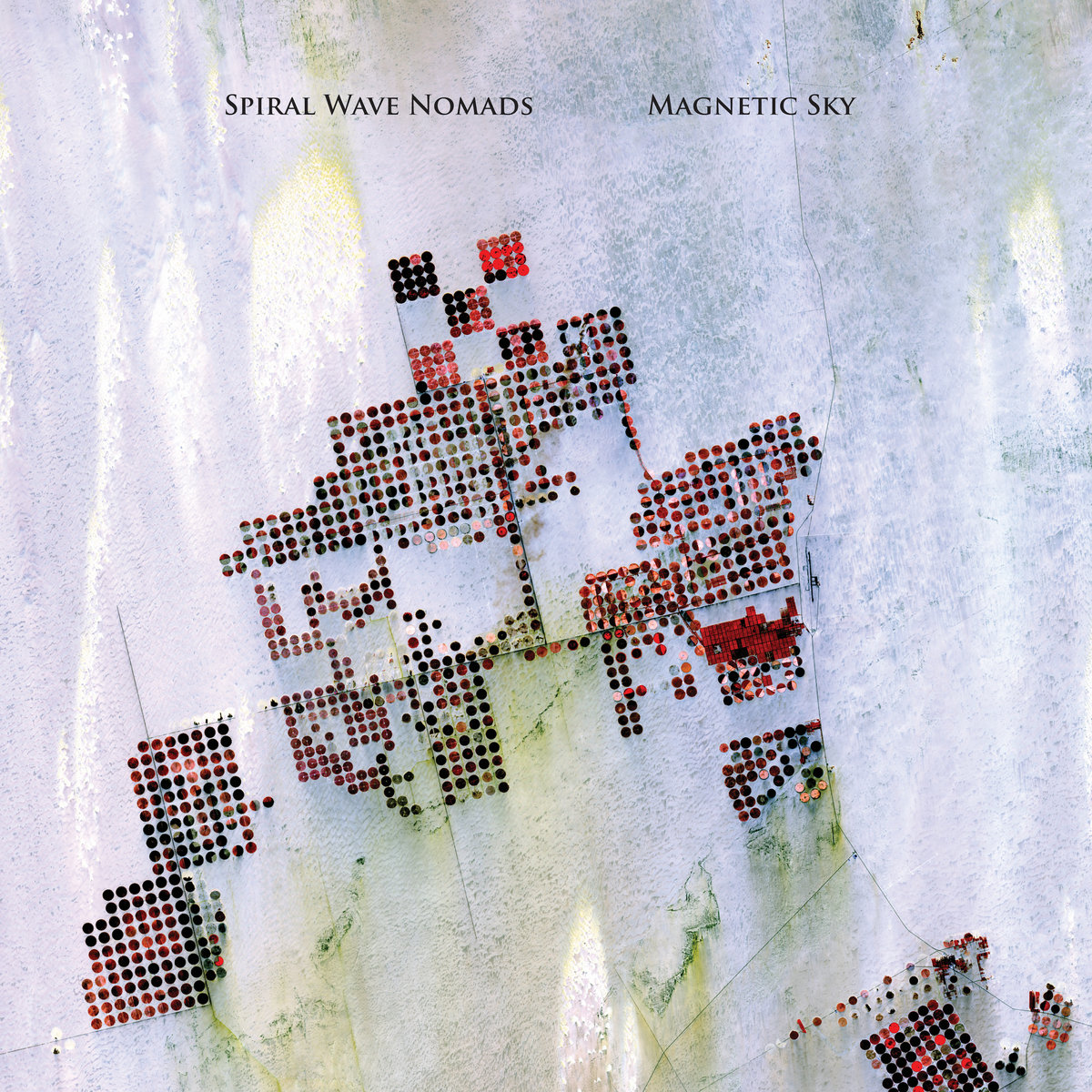 Prolific artists on their own, the duo of Eric Hardiman (guitar/bass/electronics) and Michael Kiefer (drums/keyboards) have still managed to put out their third album in four years as Spiral Wave Nomads. The spacey, psychedelic tinged guitar/bass/drum excursions are of course expected by now, but the inclusion of additional electronic instrumentation makes Magnetic Sky even greater.
Prolific artists on their own, the duo of Eric Hardiman (guitar/bass/electronics) and Michael Kiefer (drums/keyboards) have still managed to put out their third album in four years as Spiral Wave Nomads. The spacey, psychedelic tinged guitar/bass/drum excursions are of course expected by now, but the inclusion of additional electronic instrumentation makes Magnetic Sky even greater. This is the first full-length collaboration between Sabra and Tabbal, but it is apparently also the sixth collaborative release between Portland's Beacon Sound and Lebanon's Ruptured Records (which was co-founded by Tabbal). While Tabbal's solo work has been a very enjoyable recent discovery for me, this is my first encounter with Julia Sabra, who is normally one-third of the excellent Beirut-based dreampop trio Postcards. The pair do have a history of working together, as Tabbal has co-produced several Postcards releases, but their creative union only began to take shape in the aftermath of Beirut's massive 2020 port explosion (which destroyed Sabra's home, badly injured her partner/bandmate Pascal Semerdjian, and displaced a whopping 300,000 people). Unsurprisingly, one of the primary themes of Snakeskin is the precarious concept of "home" and the "the disappearance of life as we know it" in a volatile and oft-violent world. Those are admittedly more urgent themes in Tabbal and Sabra's neck of the woods than some others (the album was also inspired by the 2021 Palestinian and the invasion of Armenia), but loss and uncertainty eventually come for us all and they make a universally poignant emotional core for an album. And, of course, great art can sometimes emerge from deeply felt tragedies and Tabbal and Sabra are a match made in heaven for that challenge, as Julia's sensuous, floating vocals are the perfect complement to Tabbal's gnarled and heaving soundscapes.
This is the first full-length collaboration between Sabra and Tabbal, but it is apparently also the sixth collaborative release between Portland's Beacon Sound and Lebanon's Ruptured Records (which was co-founded by Tabbal). While Tabbal's solo work has been a very enjoyable recent discovery for me, this is my first encounter with Julia Sabra, who is normally one-third of the excellent Beirut-based dreampop trio Postcards. The pair do have a history of working together, as Tabbal has co-produced several Postcards releases, but their creative union only began to take shape in the aftermath of Beirut's massive 2020 port explosion (which destroyed Sabra's home, badly injured her partner/bandmate Pascal Semerdjian, and displaced a whopping 300,000 people). Unsurprisingly, one of the primary themes of Snakeskin is the precarious concept of "home" and the "the disappearance of life as we know it" in a volatile and oft-violent world. Those are admittedly more urgent themes in Tabbal and Sabra's neck of the woods than some others (the album was also inspired by the 2021 Palestinian and the invasion of Armenia), but loss and uncertainty eventually come for us all and they make a universally poignant emotional core for an album. And, of course, great art can sometimes emerge from deeply felt tragedies and Tabbal and Sabra are a match made in heaven for that challenge, as Julia's sensuous, floating vocals are the perfect complement to Tabbal's gnarled and heaving soundscapes. I was a bit later to the Angelo Harmsworth party than I would have liked, but the Berlin-based American composer has been fitfully releasing very distinctive blown-out "ambient" albums for about a decade now on an array of hip and discriminating small labels (Opal Tapes, Vaagner, enmossed, Psychic Liberation, etc.). Harmsworth's latest is his first for Students of Decay and marks a rare vinyl outing, as most of his previous physical releases have been limited to cassette. According to the label, Singe "may be the high water mark" of Harmsworth's career to date, which does feel like a completely plausible claim, but one that is very hard to confidently echo given how many killer Harmsworth pieces already exist. Even if Singe fails to conclusively eclipse all of Harmsworth's past triumphs, however, it does seem to be one of his most consistently strong releases and an ideal starting point for the curious. Notably, describing Harmsworth's vision as "ambient" or even "power ambient" feels cruelly reductionist, which is probably why he amusingly titled a 2020 release Fully Automated Luxury Ambient. That imaginary subgenre feels much closer to the mark, as the intensity and textural inventiveness that Angelo brings to these compositions shares far more common ground with artists like Tim Hecker or Fennesz (or collapsing power lines during a live volcano) than it does with anyone trafficking in droning, meditative loops.
I was a bit later to the Angelo Harmsworth party than I would have liked, but the Berlin-based American composer has been fitfully releasing very distinctive blown-out "ambient" albums for about a decade now on an array of hip and discriminating small labels (Opal Tapes, Vaagner, enmossed, Psychic Liberation, etc.). Harmsworth's latest is his first for Students of Decay and marks a rare vinyl outing, as most of his previous physical releases have been limited to cassette. According to the label, Singe "may be the high water mark" of Harmsworth's career to date, which does feel like a completely plausible claim, but one that is very hard to confidently echo given how many killer Harmsworth pieces already exist. Even if Singe fails to conclusively eclipse all of Harmsworth's past triumphs, however, it does seem to be one of his most consistently strong releases and an ideal starting point for the curious. Notably, describing Harmsworth's vision as "ambient" or even "power ambient" feels cruelly reductionist, which is probably why he amusingly titled a 2020 release Fully Automated Luxury Ambient. That imaginary subgenre feels much closer to the mark, as the intensity and textural inventiveness that Angelo brings to these compositions shares far more common ground with artists like Tim Hecker or Fennesz (or collapsing power lines during a live volcano) than it does with anyone trafficking in droning, meditative loops. Dave Clarkson is a gem who has flown under my—far from infallible—radar for about 30 years. There are upwards of 40 releases emanating in his impressive catalog, from the Cavendish House studio, including many of these Guides which have focused on everything from beaches, caves, forests, and lighthouses, with tangents to rain, ghost stories and illness. That another of his albums, For Horselover Fat by Eye In The Sky has a bash at honoring the concerns and creativity of the astonishing Philip K. Dick is right up my alley.
Dave Clarkson is a gem who has flown under my—far from infallible—radar for about 30 years. There are upwards of 40 releases emanating in his impressive catalog, from the Cavendish House studio, including many of these Guides which have focused on everything from beaches, caves, forests, and lighthouses, with tangents to rain, ghost stories and illness. That another of his albums, For Horselover Fat by Eye In The Sky has a bash at honoring the concerns and creativity of the astonishing Philip K. Dick is right up my alley. As John Jagos sings "
As John Jagos sings "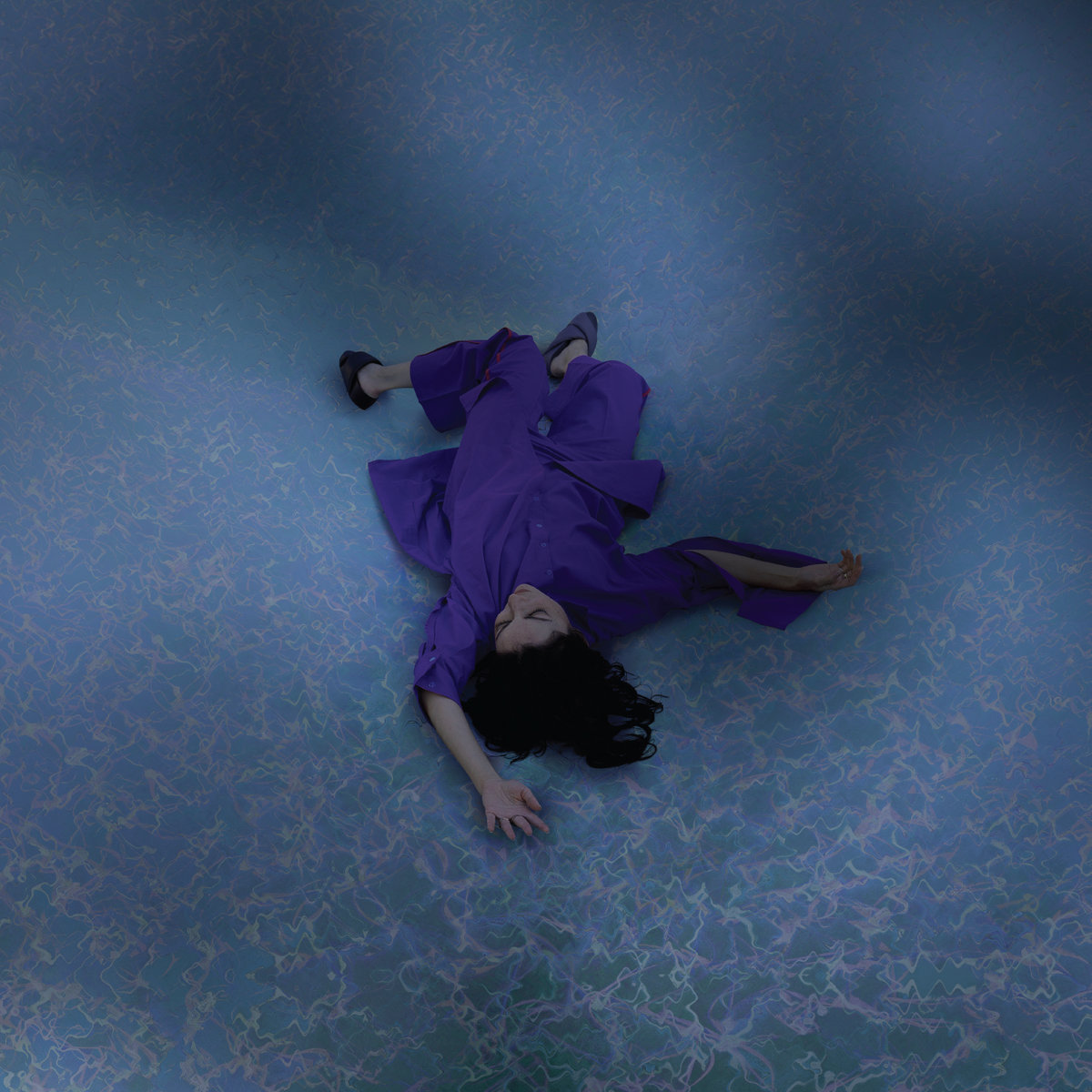 I was caught completely off guard by this latest opus from Dalt, as much of it sounds more like a three-way collaboration between Astrud Gilberto, Perez Prado, and Walter Wanderley than anything resembling the warped and stark electronic pop mutations that the Colombian composer has become synonymous with. After my initial disbelief subsided, however, I quickly decided that ¡Ay! may very well be the strongest album of Dalt's career to date. I suspect Dalt herself would probably agree, as it would be fair to say that her vision remains as compelling and innovative as ever, but she has merely kicked her self-imposed artistic restraints to the curb and embraced the warmer, more sensuous, and melodic sounds that she grew up around. Or, as the album description colorfully puts it, "through the spiraling tendencies of time and topography, Lucrecia has arrived where she began." In any case, the end result is a wonderfully sultry and evocative collection of seductive vocals and tropical rhythms beautifully enhanced with a host of psychotropic and industrial-damaged touches. And she somehow makes it sound like the most natural thing in the world. I definitely did not expect Dalt to secretly be a tropical pop genius at all, which makes her previous albums all the more fascinating now that I know that they were made while pointedly suppressing some of her greatest strengths.
I was caught completely off guard by this latest opus from Dalt, as much of it sounds more like a three-way collaboration between Astrud Gilberto, Perez Prado, and Walter Wanderley than anything resembling the warped and stark electronic pop mutations that the Colombian composer has become synonymous with. After my initial disbelief subsided, however, I quickly decided that ¡Ay! may very well be the strongest album of Dalt's career to date. I suspect Dalt herself would probably agree, as it would be fair to say that her vision remains as compelling and innovative as ever, but she has merely kicked her self-imposed artistic restraints to the curb and embraced the warmer, more sensuous, and melodic sounds that she grew up around. Or, as the album description colorfully puts it, "through the spiraling tendencies of time and topography, Lucrecia has arrived where she began." In any case, the end result is a wonderfully sultry and evocative collection of seductive vocals and tropical rhythms beautifully enhanced with a host of psychotropic and industrial-damaged touches. And she somehow makes it sound like the most natural thing in the world. I definitely did not expect Dalt to secretly be a tropical pop genius at all, which makes her previous albums all the more fascinating now that I know that they were made while pointedly suppressing some of her greatest strengths. This is Mikko Singh's best and most consistent record yet as Haleiwa. Both his first full length releases Pura Vida dude and Palm Trees Of The Subarctic were light and dreamy, while his third Cloud Formations accelerated Haleiwa onto another level, driven by good tunes and several great moments, not least the plunge through synthesizers into warm bass driven melody on the opener "HKI-97," and the digital blips of "Foggy" which (perhaps unconsciously) resembles Brian Wilson frantically transposing part of "California Girls" into morse code. That third record heralded a deeper sound, perhaps because Singh switched to analog cassette and reel-to-reel tape recording, and it also included more variety although for no clear reason. Hallway Waverider avoids that pitfall by finding a sweet spot and then showing little or no desire to move very far away.
This is Mikko Singh's best and most consistent record yet as Haleiwa. Both his first full length releases Pura Vida dude and Palm Trees Of The Subarctic were light and dreamy, while his third Cloud Formations accelerated Haleiwa onto another level, driven by good tunes and several great moments, not least the plunge through synthesizers into warm bass driven melody on the opener "HKI-97," and the digital blips of "Foggy" which (perhaps unconsciously) resembles Brian Wilson frantically transposing part of "California Girls" into morse code. That third record heralded a deeper sound, perhaps because Singh switched to analog cassette and reel-to-reel tape recording, and it also included more variety although for no clear reason. Hallway Waverider avoids that pitfall by finding a sweet spot and then showing little or no desire to move very far away. This may be Swiss pianist/composer Raphael Loher's first solo album, but he has crossed my path before with his Baumschule trio (featuring Julian Sartorius and Manuel Troller). I am much less familiar with Loher's other trio (KALI), but the importance is that he has spent time improvising with inspiring musicians and has accumulated some very intriguing compositional ideas along the way. Interestingly, Keemuun is itself a bit of an improvisatory collaboration with inspiring (if unwitting) musicians, as Loher often played along with albums by other artists while experimenting with his rapid-fire piano patterns (Beatrice Dillon's rhythmically adventurous Workaround was a particularly central touchstone). In fact, just about everything about this album's evolution feels like fertile grist for a "galaxy brain" meme: a prepared piano album…limited to only ten notes spanning two octaves…improvised against cutting edge techno rhythms…but with all of those foundational rhythms totally excised from the final recording. Needless to say, all of those factors make for a very cool album concept in theory, but I am pleased to report that Loher's brilliant execution has made this a killer album in reality as well.
This may be Swiss pianist/composer Raphael Loher's first solo album, but he has crossed my path before with his Baumschule trio (featuring Julian Sartorius and Manuel Troller). I am much less familiar with Loher's other trio (KALI), but the importance is that he has spent time improvising with inspiring musicians and has accumulated some very intriguing compositional ideas along the way. Interestingly, Keemuun is itself a bit of an improvisatory collaboration with inspiring (if unwitting) musicians, as Loher often played along with albums by other artists while experimenting with his rapid-fire piano patterns (Beatrice Dillon's rhythmically adventurous Workaround was a particularly central touchstone). In fact, just about everything about this album's evolution feels like fertile grist for a "galaxy brain" meme: a prepared piano album…limited to only ten notes spanning two octaves…improvised against cutting edge techno rhythms…but with all of those foundational rhythms totally excised from the final recording. Needless to say, all of those factors make for a very cool album concept in theory, but I am pleased to report that Loher's brilliant execution has made this a killer album in reality as well.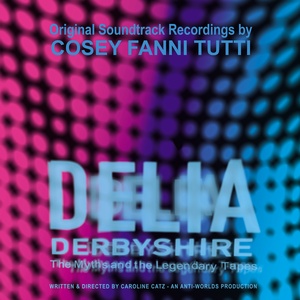 We seem to be in the midst of a long-overdue Delia Derbyshire renaissance at the moment due to the efforts of filmmaker Caroline Catz, Cosey Fanni Tutti, BBC Radiophonic Workshop's Mark Ayres, and others. Fittingly, this unusual and inspired album was commissioned back in 2018 as a score for Catz's similarly unconventional feature-length documentary. Sadly, it seems damn near impossible to see Catz's film at the moment (outside the UK, at least), but this soundtrack was released earlier this year to coincide with Cosey's own foray into telling Derbyshire's story (Re-Sisters: The Lives and Recordings of Delia Derbyshire, Margery Kempe and Cosey Fanni Tutti). The book, film, and album were all inspired by research into Derbyshire's archive and the voluminous recordings and writings that became available after the visionary electronic artist's passing in 2001. Apparently, copyright issues are preventing much of Derbyshire's unearthed work from seeing an official release (there are some great unofficial ones like Inventions For Radio/The Dreams out there), but this album is a compelling consolation prize: using Derbyshire's notes on her compositions and techniques, Cosey has achieved a sort of posthumous homage/collaboration in which her own aesthetic is co-mingled with Derbyshire's singular and groundbreaking techniques and sounds.
We seem to be in the midst of a long-overdue Delia Derbyshire renaissance at the moment due to the efforts of filmmaker Caroline Catz, Cosey Fanni Tutti, BBC Radiophonic Workshop's Mark Ayres, and others. Fittingly, this unusual and inspired album was commissioned back in 2018 as a score for Catz's similarly unconventional feature-length documentary. Sadly, it seems damn near impossible to see Catz's film at the moment (outside the UK, at least), but this soundtrack was released earlier this year to coincide with Cosey's own foray into telling Derbyshire's story (Re-Sisters: The Lives and Recordings of Delia Derbyshire, Margery Kempe and Cosey Fanni Tutti). The book, film, and album were all inspired by research into Derbyshire's archive and the voluminous recordings and writings that became available after the visionary electronic artist's passing in 2001. Apparently, copyright issues are preventing much of Derbyshire's unearthed work from seeing an official release (there are some great unofficial ones like Inventions For Radio/The Dreams out there), but this album is a compelling consolation prize: using Derbyshire's notes on her compositions and techniques, Cosey has achieved a sort of posthumous homage/collaboration in which her own aesthetic is co-mingled with Derbyshire's singular and groundbreaking techniques and sounds. When I first heard the thumping house/disco EP Was It Ever Real?, I had a very hard time believing that it could possibly be a teaser for something more substantial, as much of that EP felt like top-tier Soft Pink Truth that leaves very little room for improvement. If those songs did not make the cut for the full-length, I felt the album surely had to be either absolutely brilliant or absolutely wrong-headed with no possible middle ground. As it turns out, I was at least right about the "little room for improvement" bit, as Is It Going To Get Any Deeper Than This? is not noticeably stronger than the preceding EP. Instead, it feels more like a lateral move, taking Drew Daniel's star-studded house party in a more kaleidoscopically arty and eccentric direction. Unsurprisingly, Deeper features roughly the same international cast of talented guests as the EP, but there are some noteworthy new additions as well, such as Nate Wooley, Wye Oak's Jenn Wasner, and Jaime Stewart (Xiu Xiu). The result is a bit less "all killer, no filler" this time around, but the trade-off is that Deeper is an appropriately deeper and more immersive plunge into Daniel's psyche, touching upon everything from Barry White to George Bataille to krautrock while still managing to be functional, forward-thinking, and archly fun dance music.
When I first heard the thumping house/disco EP Was It Ever Real?, I had a very hard time believing that it could possibly be a teaser for something more substantial, as much of that EP felt like top-tier Soft Pink Truth that leaves very little room for improvement. If those songs did not make the cut for the full-length, I felt the album surely had to be either absolutely brilliant or absolutely wrong-headed with no possible middle ground. As it turns out, I was at least right about the "little room for improvement" bit, as Is It Going To Get Any Deeper Than This? is not noticeably stronger than the preceding EP. Instead, it feels more like a lateral move, taking Drew Daniel's star-studded house party in a more kaleidoscopically arty and eccentric direction. Unsurprisingly, Deeper features roughly the same international cast of talented guests as the EP, but there are some noteworthy new additions as well, such as Nate Wooley, Wye Oak's Jenn Wasner, and Jaime Stewart (Xiu Xiu). The result is a bit less "all killer, no filler" this time around, but the trade-off is that Deeper is an appropriately deeper and more immersive plunge into Daniel's psyche, touching upon everything from Barry White to George Bataille to krautrock while still managing to be functional, forward-thinking, and archly fun dance music.
